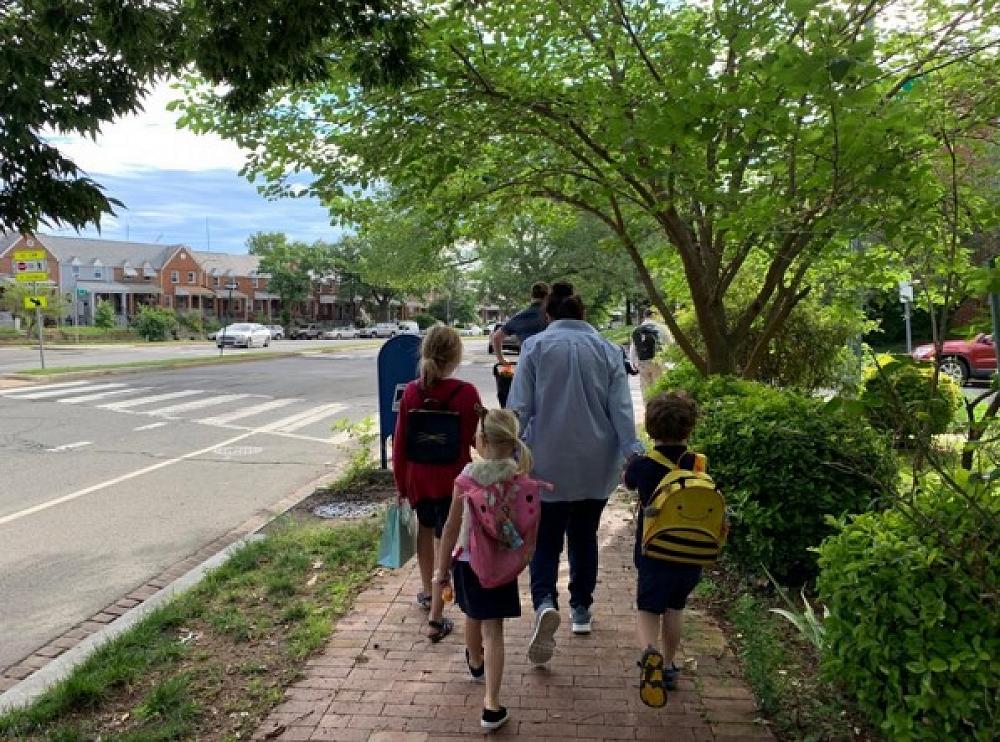
Walking Bus Co-ordinator
Last year our community was surveyed by the CCC for the School Travel Plan. Thanks to those who participated in the survey.
The school will continue to lobby the Council about drop off times as part of our Travel Plan and the need for pedestrian crossing points at our end of Selwyn Street as these were two major issues. The speed of traffic is always an issue for us and the school put on a submission to have traffic travel at 30km near schools. It took over 10 years to get the speed signs on Somerfield and Studholme Street!! Like many things, COVID has taken over and we have heard nothing about speed zones outside schools. Another key finding was that people would participate in a walking bus if it was available. This needs further investigation.
On a positive note it is great that so many of our tamariki do bike, scooter or walk to school. It would be great to see more do so if possible.
If you are keen to volunteer to take a coordination role in developing walking buses for our community please contact me. It would involve:
- working with the school to develop a more depth survey of the community to see who would use walking buses, where the bus could operate and to find out who of our whānau can help.
- setting up the buses
- Overseeing the running of the buses
If you feel you have the time, energy, connections to our community and skills please contact me d.torrey@somerfield.school.nz
Some of the other key findings of the survey were:
- Encouragingly, the predominant transport mode to School for all year groups is walking. As children age a higher percentage of travel by active modes can be seen, this is typically due to parents being more comfortable with children travelling to school alone when they are older. Active modes are considered as walking, scooting, cycling, and busing.
- 92% of respondents travel from 0-2km to get to school, with the remaining 8% of respondents travelling 2-5km.
- The main reasons respondents preferred to drive their child to school was due to dropping them on the way to work, worried about their child/ren’s road safety awareness and the distance between home and school is too far.
- The main reasons people preferred to drive their child to school they were then asked what would make them walk, cycle or scoot more often. The main factors that would encourage them to use active transport more often was if they were older, there were safer places to cross the road and the distance between home and school was shorter.
- 64% of respondents would feel more comfortable with their child/ren travelling to school independently if there were more crossing points. 96% of respondents would feel more comfortable with their child/ren travelling to school independently if there were lower traffic volumes/speeds. 68% of respondents indicated they would be more comfortable with their child/ren biking to school after completing a cycle safe course. Year 6 students at Somerfield te Kura Wairepo complete the CCC bike safety course and we have a bike safety week.
- 57% of respondents would use a walking school bus in the neighbourhood, with 27% of respondents willing to supervise it. This could also be something for Somerfield school to consider as part of their school travel plan.
Congestion issues outside the School
- Approximately 71% of respondents felt as though there was congestion outside of Somerfield School.
What do you see as the main issues?
- From the 71% who felt there was a congestion issue, around 57% of them felt as though there is too many vehicles trying to find a park. Parking over driveways, double parking and parking on no parking lines were identified as issues in the area. Unsafe behaviours such as parking on the berm and the time limit being too School Travel Plan Somerfield School 2021 long were also identified. The main issues shared by respondents all align to parking issues, the Community Travel Advisor will be able to request some parking education/enforcement from the Christchurch City Council parking team to investigate parking behaviours at school pick up/drop off times.
- Selwyn Street is mentioned many times by respondents as they feel there are no adequate crossings for young children to safely negotiate crossing the road between intersections at Selwyn/Somerfield and Selwyn/Milton intersection. The crossing at Barrington/Somerfield Street is particularly dangerous as cars often do not stop for young children. Milton/Simeon street corner is of concern to respondents, particularly for children on bikes and those coming from the north to school. All Somerfield street intersections are particularly unsafe with cars travelling too fast, and general poor driving behaviour from other road users.
- The main area of concern around school safety around these locations was a lack of pedestrian crossing points. The other main areas of concern included cars travelling too fast, too many cars on the roads and inconsiderate and dangerous driving by other road users.
